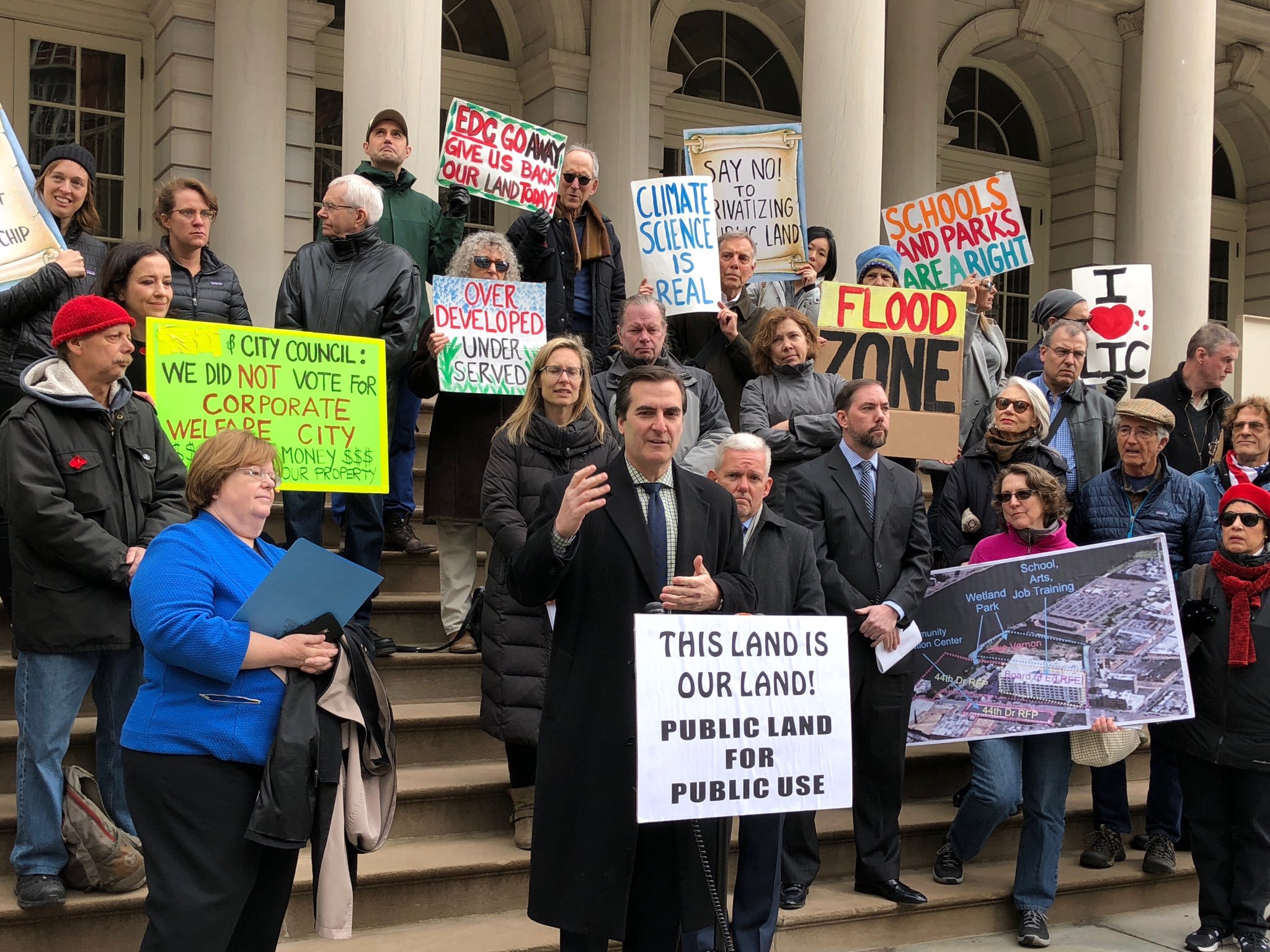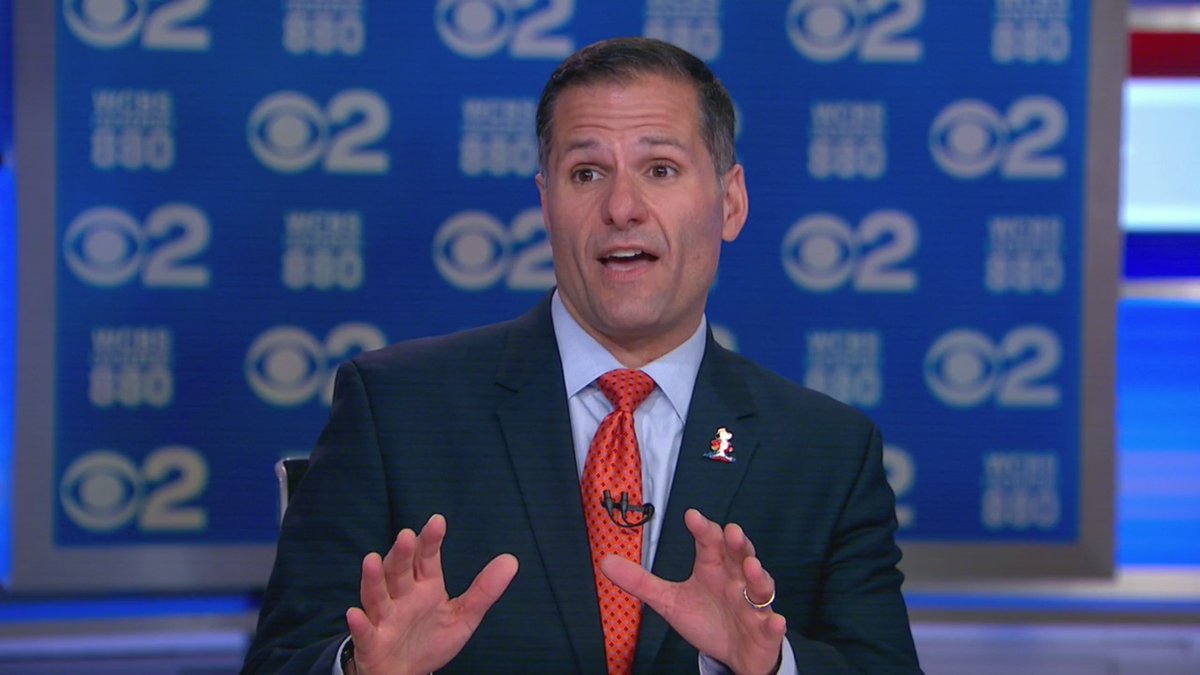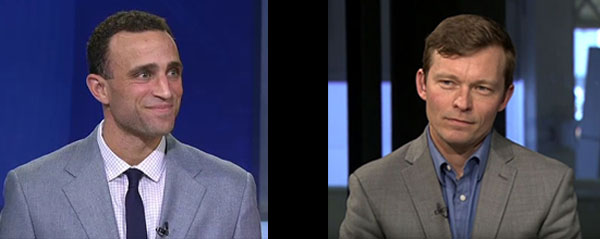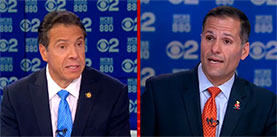Senate Democrats Full of Optimism About Flipping Chamber, One-Party Control of State Government

Senator Michael Gianaris (photo: @SenGianaris)
New York Democrats are confident that the upcoming elections will result in a completely blue state government, believing they will easily upend the current one-seat majority held by Republicans in the State Senate, according to the head of the Democratic Senate Campaign Committee, State Senator Michael Gianaris of Queens.
If they hold the governorship, and Democratic incumbent Governor Andrew Cuomo is expected to win a third term, and their supermajority in the Assembly, Democrats could have unfettered control of the law-making process in Albany if they are able to win a Senate majority on Election Day, November 6.
Appearing on the Max & Murphy program on WBAI radio, Gianaris recently outlined a rosy picture for Democrats, citing “about a dozen” Senate races as competitive, almost all of them for seats currently held by Republicans.
“We’re only defending one and they’re defending about 10,” Gianaris said. “We’re feeling very good about our chances in a year where Democratic turnout is reaching historic levels for an off-year.”
In the primary elections, Democratic turnout more than doubled compared to 2014, with roughly 1.5 million people casting a vote. While New York is a deeply Democratic state overall, Republicans have held to a tight Senate majority, in part by winning close races in swing districts, aided by prior drawing of legislative districts that favored their chances. But Democrats believe that registration and demographic trends, a stable of strong candidates, and broader trends including President Donald Trump’s unpopularity in New York, give them a significant edge this year.
Gianaris puts the dozen or so competitive elections into two categories — elections for seats where current Republican officeholders are retiring and elections where Republican incumbents are vulnerable. He feels the likelihood of the retirees’ seats going blue is “very, very good.” The battleground seats are largely on Long Island and in the Hudson Valley, though there are others further north and west in the state, and even one in Brooklyn.
“What’s really happening is these races have all become nationalized, and you saw the turnout spike in the primaries,” Gianaris said. “What’s happening, as we understand it, is Democrats, female Democrats in particular, are very activated by the Trump administration, by the Trump presidency, and have decided to take their country back.”
The effect of this change may first be felt in the five districts where GOP senators have retired leading up to the midterm elections.
In Syracuse, Republican John DeFrancisco is retiring, with Democrat John Mannion and Republican Robert Antonacci fighting for the seat in a district that Hillary Clinton carried in 2016. Republicans William Larkin, Tom Croci, John Bonacic, and Kathy Marchione have also announced their retirements in districts Democrats believe they have a chance of winning and have invested significantly to do so — in the fights for Larkin’s and DeFrancisco’s seats, the DSCC invested $193,000 and $270,000, respectively. This is only a small percentage of the millions of dollars Gianaris says the DSCC has put behind candidates this year, which he says is more than “any time since I’ve been in the Senate.”
Gianaris also indicated that support from Cuomo is better than it has been in cycles past, when the governor has been accused of sitting things out, tacitly approving a Republican Senate so that he can negotiate more moderate policies.
Citing six different races featuring Democratic challengers to Republicans who are not retiring, Gianaris continued his list of winnable seats, noting where the DSCC has invested resources. In Brooklyn’s District 22, Democrat Andrew Gounardes hopes to unseat Republican Senator Marty Golden, a seat Golden has held for nearly two decades but where Democrats have an enrollment advantage. Cuomo has gone to the district to campaign with Gounardes, and also cut a video ad for him.
The challenge districts Democrats think they can win extend to Putnam County’s District 40 in a race featuring Democrat Pete Harckham and Republican incumbent Terrence Murphy, and other districts, especially on Long Island, where Democrats see pick-up opportunities in the seats held by Senators Carl Marcellino and Elaine Phillips, as well as the one seat, currently held by Senator John Brooks, that Gianaris and others have acknowledged is the one they see as vulnerable. Brooks is being challenged by Republican nominee Jeff Pravato.
Gianaris sees this year as a chance for redemption for Democrats who feel robbed after seeing the Independent Democratic Conference break away from mainline Democrats and form a coalition government with Senate Republicans and Democratic Senator Simcha Felder joining the Republican conference to create an “artificial Republican majority.” The has stopped the Senate from “voting on the types of things that we should be voting on,” Gianaris said, going to list a variety of issues from women’s reproductive rights to voting reform.
Gianaris and other Democrats see New York potentially becoming a progressive leader if things go as they expect on Election Day. But Senate Republicans are doing everything in their power to sound the alarm on one-party rule in New York, arguing that the state Senate is all that stands between New Yorkers and higher taxes, government-run health care, and a state government far too oriented toward New York City at the expense of upstate and Long Island.
Gianaris dismisses those warnings. “We have an opportunity to lead the nation in standing up for progressive values and pushing back against what’s coming out of Washington,” he said.
***
by Victor Porcelli, Gotham Gazette
@GothamGazette
Molinaro Reveals Reason He Didn’t Vote for Trump

Marc Molinaro during Tuesday's debate (photo via @CBSNewYork)
Marc Molinaro, the Republican nominee for governor of New York, has long-insisted that he did not vote for Donald Trump in 2016, saying that he “had significant differences at the time” and decided to write in former Republican U.S. Rep. Chris Gibson for president.
As he’s tried to straddle the Trump divide in the New York Republican Party and appeal to independent and moderate voters in an uphill quest to unseat Democratic Governor Andrew Cuomo, Molinaro has been hesitant to explain what exactly led him to shun Trump two years ago. On Tuesday, speaking with reporters after his debate with Cuomo, during which the incumbent repeatedly tied his challenger to the president, Molinaro at last revealed more specifically what had made him unable to vote for Trump, the Republican nominee at the time and party standard-bearer.
The father of a daughter with developmental disabilities, Molinaro said that Trump mocking a disabled journalist, Serge Kovaleski of The New York Times, during a late-2015 campaign rally was the tipping point.
Like virtually all Republican candidates running this year, Molinaro is regularly asked his opinions of Trump, and he has cited several areas of disagreement, while also saying he is ready to support or challenge the president as necessary to fight for New Yorkers. Molinaro has specifically mentioned Trump’s “both sides” response to the white nationalist and response marches in Charlottesville, VA; the administration’s child separation policy at the Mexico border; and the federal tax reforms that Trump signed into law and effectively raise taxes for many New Yorkers as three areas where he has disagreed with the president.
But all of those are since Trump was inaugurated. Until Tuesday Molinaro had never explained the specifics behind his vote for Gibson, who is now retired from Congress and the chair of Molinaro’s campaign.
During the debate with Cuomo, hosted by CBS television and radio, Molinaro found himself on the defensive as the governor over and over again tied him to Trump, who has low approval ratings in New York. In one particularly stark exchange Cuomo repeatedly asked Molinaro “Do you support President Trump?” which the challenger refused to answer directly.
Molinaro attempted to get the moderators to move along, but Cuomo thundered away. Molinaro gave partial answers about calling it like he sees it and the impressive overall economy, and also repeatedly sought to turn the tables, pointing out past ties between Cuomo and Trump, who has donated more than $60,000 to Cuomo over the years and appeared in a video at Cuomo’s bachelor party (Molinaro has cozied up to the Trump family more recently, as City & State reported this week).
Curiously, Molinaro did not offer debate viewers and listeners the fact that he did not vote for Trump in 2016, perhaps indicative of the delicate balancing act he’s trying to perform in appealing to the millions of Trump voters in New York and many independents and moderates who disapprove of the president but may be willing to choose someone other than Cuomo.
When he appeared with a group of reporters covering the debate afterward, Gotham Gazette asked Molinaro why he did not offer that piece of information during the debate, as he has during a number of interviews and press conferences throughout his campaign for governor.
“I wasn’t willing to allow the governor to dictate my answer to that question,” Molinaro said, referring to when Cuomo repeatedly pressed him to explain whether he supports Trump, the governor’s own question, not one from the moderators.
“Listen,” Molinaro went on, before pausing to collect himself and continuing with his voice cracking at times, “I don’t know if the president meant it during the presidential campaign, I don’t know it, but when he acted out in a way that discredited a reporter who lived with a disability, I don’t think it was his intention, but I’ve seen it before -- in fact as a kid I probably did it myself -- and as the father of a child with a disability I wasn’t willing to put myself in the position of demeaning what my daughter goes through every day of her life.”
Molinaro then took a question about what upstate voters may have gotten from the debate.
Asked another question about Trump, and whether he sees him as a net positive or net negative for New York, Molinaro was reminded by a campaign advisor to return the focus to his race against Cuomo.
“I’m running against Andrew Cuomo,” Molinaro said. “As I have said and will repeatedly say: I want New York State to benefit from economic recovery, and to the extent that America now is the most competitive economy in the world, New York needs to benefit from that. But to allow this campaign to be about anything other than Andrew Cuomo’s failure, his incompetence, and his corruption is a disservice to the people of New York.”
[Read: Marc Molinaro and The Trump Question]
***
by Ben Max, Gotham Gazette
@tweetBenMax @GothamGazette
Max & Murphy Podcast: Cuomo-Molinaro Debate Analysis

Ben Max, left, of Gotham Gazette, and Jarrett Murphy, right, of City Limits
October 23, 2018 - Max & Murphy Podcast: Cuomo-Molinaro Debate Analysis
 The day after the Andrew Cuomo-Marc Molinaro gubernatorial debate on CBS, hosts Jarrett Murphy and Ben Max break down what went down.
The day after the Andrew Cuomo-Marc Molinaro gubernatorial debate on CBS, hosts Jarrett Murphy and Ben Max break down what went down.
Listen to the conversation with the two candidates and let us know what you think -- we're on Twitter @TweetBenMax and @JarrettMurphy. You can listen to the show through the embedded audio below or download the episode wherever you get your podcasts, under "Max & Murphy," and listen to Max & Murphy live on Wednesdays at 5 p.m. on WBAI radio, 99.5FM or wbai.org
***
by Ben Max, Gotham Gazette
@tweetBenMax @GothamGazette




